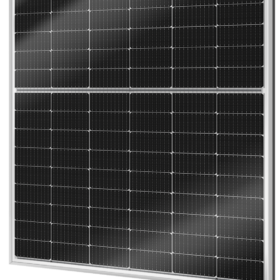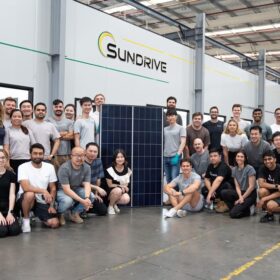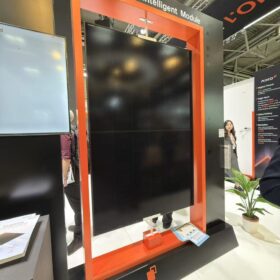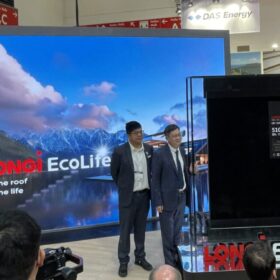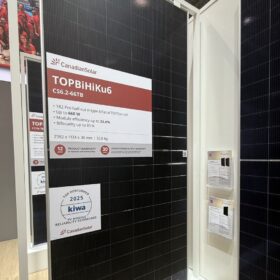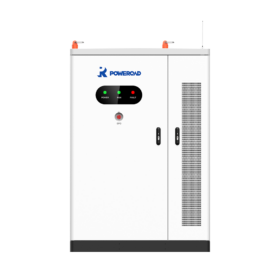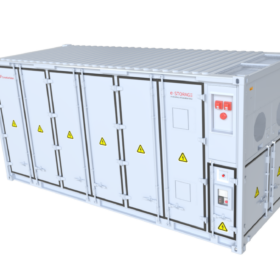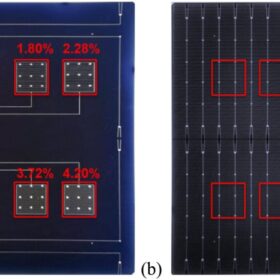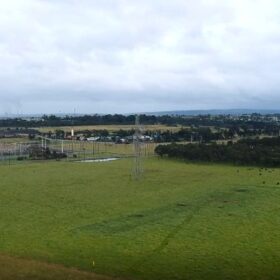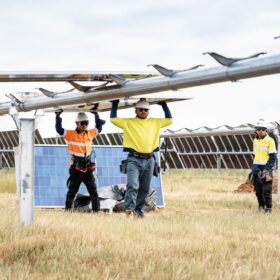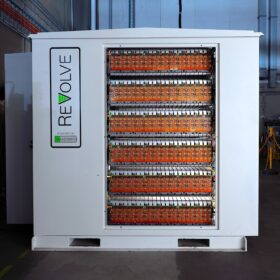Sofar releases two new C&I energy storage solutions
Chinese storage manufacturer Sofar has released a flexible energy storage system for small and medium-sized commercial and industrial users, as well as a storage cabinet for AC-coupled scenarios.
Sunport Power launches lightweight n-type glass module with 22.5% efficiency
The Chinese manufacturer told pv magazine that high production costs and low module prices influenced its decision to change its well-known metal wrap through technology out for mass produced N-type technology for its latest product.
SunDrive strikes China pact to scale up copper PV technology
Australian PV innovator SunDrive Solar says it has struck an agreement with two of China’s biggest solar equipment manufacturers to help launch its copper electrode technology onto the global market.
Aiko unveils back-contact solar module with ‘fully intelligent integration’
Chinese solar cell and module maker Aiko has unveiled its new intelligent solar module series, Navigator. Based on the company’s N-type, all-back-contact technology, Navigator promises a 3% to 5% boost in annual energy yield and lower operating costs.
Longi launches all-black back contact solar panel series
The EcoLife series brings Longi’s back contact technology to the residential solar market with panels that reportedly offer quicker system payback and reduced power degradation over time.
Canadian Solar debuts 660 W TOPCon solar panel with 24.4% efficiency
The new products are available in seven versions with power output ranging from 630 W to 660 W and power conversion efficiency spanning from 23.3% to 24.4%.
Poweroad launches 233 kWh battery for C&I solar
The Chinese manufacturer said that up to 10 battery cabinets can be connected in series to reach a total storage capacity of 2.33 MWh.
Longi launches residential HJT back-contact solar module with 25% efficiency
Longi has developed the Hi-MO S10, a residential heterojunction (HJT) back-contact solar module with 25% efficiency, combining 27.6%-efficient cells with up to 510 W output and 252.3 W/m² power density.
Canadian Solar’s storage unit launches 5 MWh battery
The battery unit of the Chinese PV manufacturer said its new large-scale battery has a lifecycle of more than 12,000 cycles. The system has a nominal capacity of 5 MWh and a roundtrip efficiency of up to 95%.
Jolywood’s laser-assisted firing process increases TOPCon solar cell efficiency by 0.6%, says UNSW research
New research from the University of New South Wales have found that the Special Injected Metallisation (JSIM) technique developed by Chinese manufacturer Jolywood can considerably increase TOPCon solar cell efficiency. The scientists described precisely how laser-assisted firing enhances cell performance, reportedly filling critical gaps in industrial TOPCon cell optimisation.

